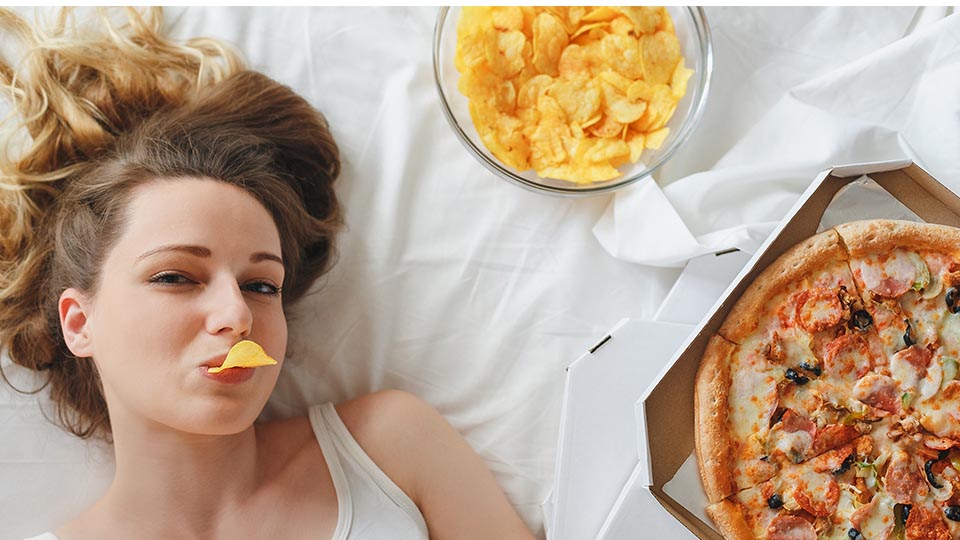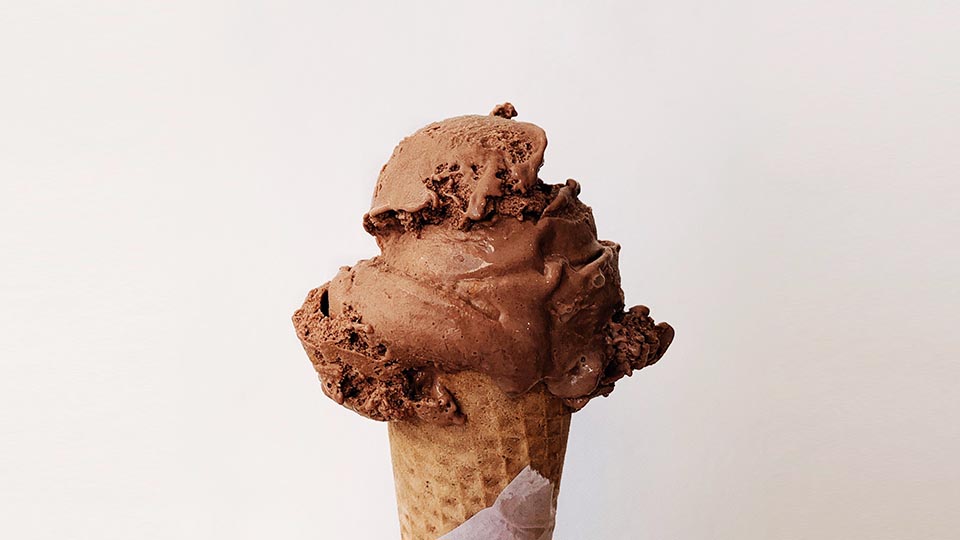By Flowertown's Emma Stone, provided exclusively to Benzinga Cannabis.
One moonlit summer evening last year, a group of friends and I sat around a campfire, passing a joint back and forth until the early hours of the morning. A few hours later, I woke up with a hunger so fierce it almost derailed me. Doritos, my brain commanded. Salsa flavor. Now. I was instantly fixated on one objective: get the Doritos as quickly as humanly possible, and consume the entire bag.
When I had satiated that craving, it was replaced by another, equally unhealthy, equally specific desire: cheesy NY-style mushroom pizza. My veganism lapsed that day, and the day will be forever etched in memory as my first proper encounter with the munchies. Suffice it to say, I was awed by their all-pervasive power, and literally incapacitated by my ravenous appetite.
The munchies are one of the tropes most commonly associated with cannabis consumption. Most of us who have gotten high are familiar with the insatiable desire to snack, minutes or hours later. What’s the science behind cannabis fueling a desire to eat everything within sight? The main culprit is THC.

THC: Hello, appetite!
“THC is an appetite stimulant,” explains Dr. Patricia Frye, cannabis expert and chief medical officer at HelloMD. THC works to partially activate the brain’s CB1 receptors. “When the CB1 receptors are activated, they stimulate areas of the brain that produce appetite, or the desire to eat,” Frye says. “Any mode of delivery that delivers THC to the bloodstream and brain, including inhalation, oromucosal methods, or edibles, can increase the user’s appetite.”
It’s no coincidence that medicinal cannabis offers so many benefits to individuals living with cancer or undergoing chemotherapy. Cannabis can help to boost appetite, whereas cancer and its treatments often dampen it.
The munchies are also beneficial for those who are so busy doing life they forget to prioritize eating. Alexis Rosenbaum, of Rosebud CBD, reveres the munchies for this particular reason. “I love them,” she reflects. “They’re my favorite side effect of cannabis.”

Alexis Rosenbaum by Rosebud CBD – CC BY
Rosenbaum says that, as a busy Type A personality running a business, food tends to be last on her priority list. “Cannabis is a tool that helps me intentionally eat, and eat a lot,” she says. Rosenbaum has a long list of preferred post-cannabis snacks, including pancakes, bacon, vanilla cupcakes (icing optional), French toast, donuts, and ice cream.
How THC stimulates the appetite
According `to a 2014 study on mice, neuroscientists discovered that THC connects with receptors in the brain’s olfactory center, enhancing the user’s ability to smell food. Sense of smell and taste are closely linked, so when the scent of food is enhanced, taste becomes heightened as well. The natural outcome is increased appetite.
The researchers also found that the feeling of hunger driven by THC is comparable with the feeling of hunger experienced when fasting. When the mice were forced to fast for 24 hours, the cannabinoid levels in their olfactory lobes increased. The fasting mice were more attuned to smell, and therefore taste. What this means is that THC essentially fools the brain into believing that the body is starving, even if it’s not.
Other research has found that cannabinoids may also enhance the sweet taste of foods, which explains the heightened sugar cravings some experience when they consume cannabis.

Fun facts about the munchies
Not everyone who consumes cannabis will get the munchies. Those with less endocannabinoids or cannabinoid receptors in the olfactory region of the brain are less likely to have their appetites stoked by THC. Equally interesting (and probably a source of great relief to many) is that research indicates that regular cannabis use and post-cannabis snacking doesn’t necessarily mean you’re going to break the scales.
“Studies show that people who use cannabis tend to consume more calories, but have lower body fat percentages and are less likely to be obese than non-users,” explains Frye.
That being said, it’s probably advisable to feed your hunger with some nutritious, satisfying snacks, rather than loading up on junk food, sugars, and carbs. If you’re planning on getting high, be sure to stock your pantry and refrigerator with plenty of guacamole, hummus, nuts, whole-grain crackers, and raw treats to complement the inevitable Dorito and donut binge.
All images from Flowertown.
Spanish version, "Pintó el Bajón: Por Qué el Cannabis Te Da Hambre," on ElPlanteo.com.
The preceding article is from one of our external contributors. It does not represent the opinion of Benzinga and has not been edited.
© 2025 Benzinga.com. Benzinga does not provide investment advice. All rights reserved.
Trade confidently with insights and alerts from analyst ratings, free reports and breaking news that affects the stocks you care about.
Cannabis is evolving – don’t get left behind!
Curious about what’s next for the industry and how to leverage California’s unique market?
Join top executives, policymakers, and investors at the Benzinga Cannabis Market Spotlight in Anaheim, CA, at the House of Blues on November 12. Dive deep into the latest strategies, investment trends, and brand insights that are shaping the future of cannabis!
Get your tickets now to secure your spot and avoid last-minute price hikes.